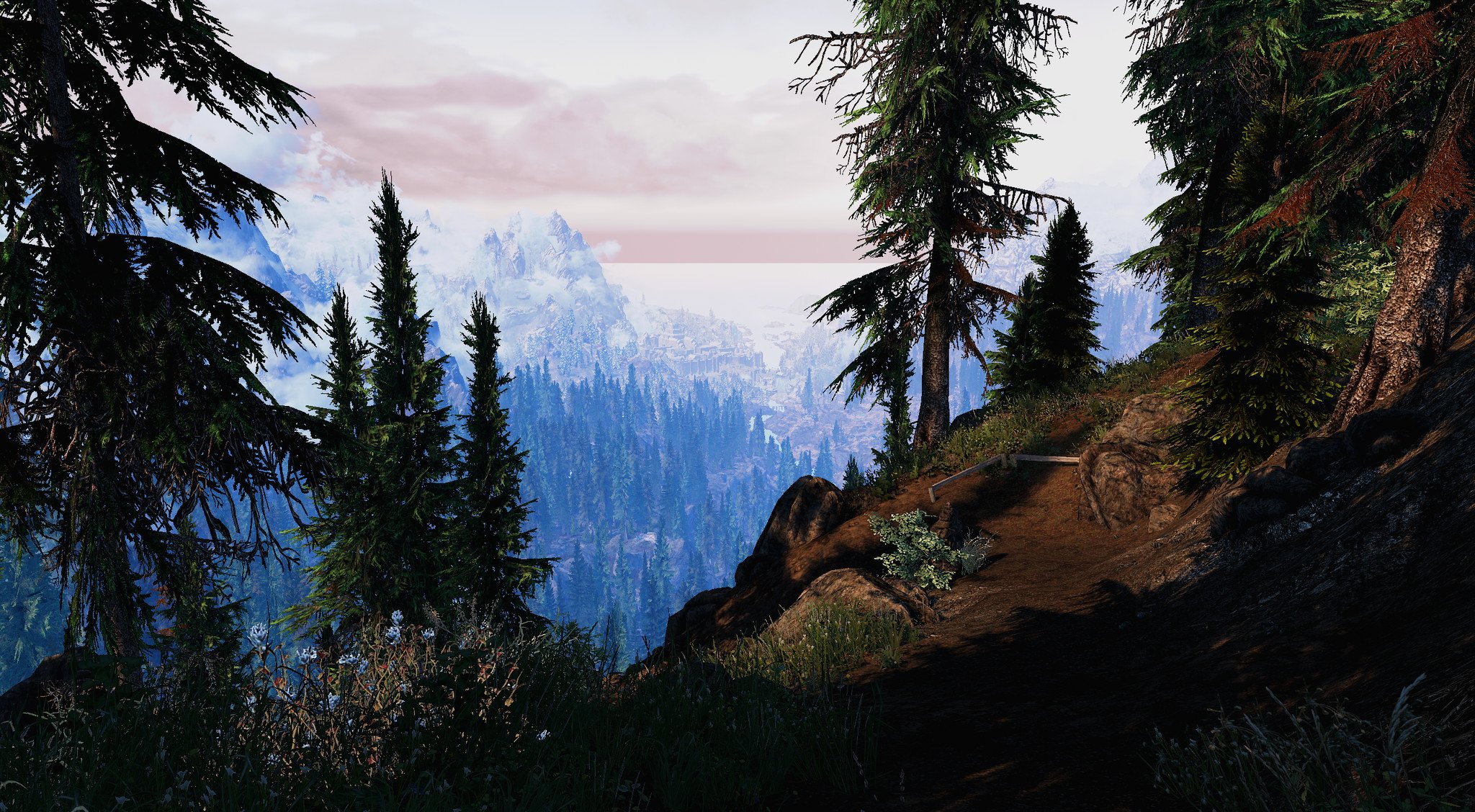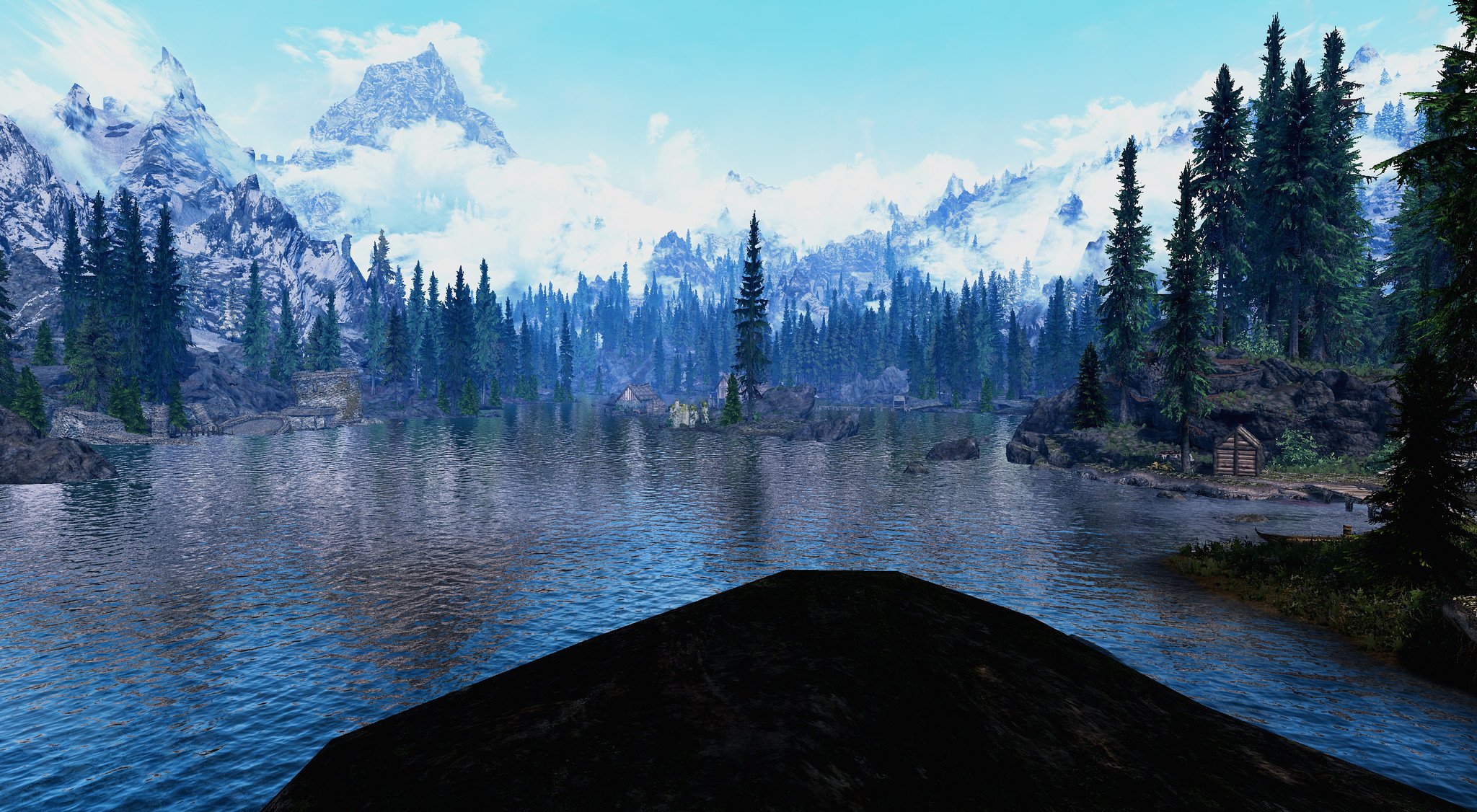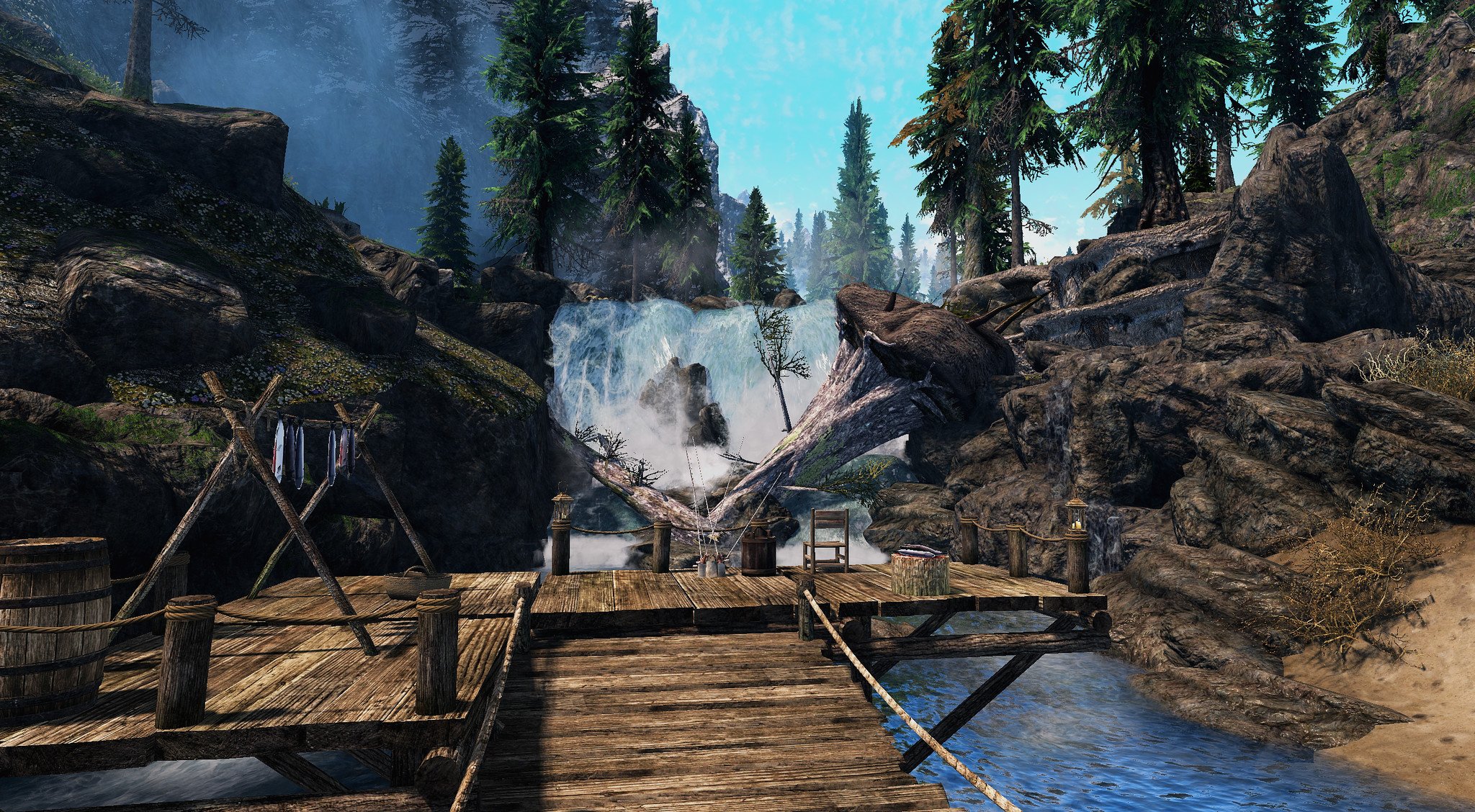The Elder Scrolls V: Skyrim is still worth ultra-modding in 2020
Changing everything from the looks to the core gameplay, Skyrim has never been better.

Skyrim isn't a new game anymore, even with all of the re-releases that Bethesda has put out to cash in on its success. The Special Edition came out in 2016, and although it was an improvement over the original, the modding community wasn't content to let it lie. The Skyrim Nexus is chock full of things for you to install, but it can be challenging to decide what to put into your game, especially considering you have conflicts to tackle.
Modding Skyrim can be as easy or complicated as you want it, depending on what you're looking to get out of your game. This isn't a guide on how to ultra-mod Skyrim — such a thing already exists — but rather a discussion on whether it's still worth going above and beyond to play a total overhaul of this classic of the 2010s.

Return to Skyrim
A classic of the modern age, Skyrim is still revered as one of the best games of the last (and current) generation. It spans a gorgeous open world full of dungeons, quests, and NPCs. But take it all multiple steps forward with an extensive mod collection, and you have yourself a whole new game. If you want more, go a bit further, so you hit the "ultra-mod" status.
Some background
I remember the day fondly that Skyrim came out. I lined up outside Gamestop with a bunch of other people, despite the cold Colorado air. One guy was blasting the trailer music in his car, getting us all pumped up for when the doors opened.
See, I had a wedding to go to that same day for my now sister-in-law and her husband. Despite being the person in charge of controlling the music, and therefore necessary, I decided to skip sleeping to play Skyrim. I was amazed. In the months and years to follow, I poured hundreds of hours into the Xbox 360 and PC versions as I did with Daggerfall, Morrowind, and Oblivion. Throw in Dawnguard and Dragonborn, and I was a content gamer for years.
Before, I thought 200-400 mods were "ultra." Oh, how wrong I was.
I've long dabbled in modding Bethesda games, but I usually just installed some graphical mods, gameplay adjustments, and the required bugfixes and patches. It wasn't until I upgraded to a 1080 Ti that I felt the urge to go back to Skyrim and install a bunch of GPU-crippling mods. Though my framerate never exceded 60fps, I loved almost every minute.
Now here I sit with a 2080 Ti, and I wanted to take a stab at real ultra-modding Skyrim. Before, I thought 200-400 mods were "ultra," but it wasn't until I dove into the enthusiast community that I found out how wrong I was. There were people with mind-bogglingly huge modlists and load orders, and I discovered tools I'd never heard of before, like SSEEdit and DynDOLOD. It was overwhelming, and it pushed me away for a few months.
It wasn't until weeks ago that I decided to take a stab at Lexy's Legacy of the Dragonborn, an extensive guide to have a beautiful and stable ultra-modded Skyrim. The pre-requisites list alone was enough to put off a sane human being, let alone how many mods to install, configurations to run, merges to do, and so on. It took a couple of tries and almost 24 hours of work, but I managed to get everything up and running. You can see the results in the images contained within this post.
All the latest news, reviews, and guides for Windows and Xbox diehards.
The process
All credit for how my installation of Skyrim looks and runs goes to DarkLadyLexy and their team. Though the amount of work the user has to put in is quite substantial, it pales in comparison to the work required to maintain the guide and patches. Seriously, kudos.
For me, it was worth purchasing a month's worth of Nexus Premium, which allows multiple, uncapped downloads for getting the mods. It's something I recommend because even with that, a lot of the total time is devoted to understanding the files you need. I can't imagine how much longer it would take with the free membership, which is why I decided the premium subscription was worth it for me. It was only a couple of bucks for the month.
I started my journey on the intermediate side of a newb. I had spent most of my time using the old Nexus Mod Manager, which is now Vortex (and I hate it). This guide required the use of Mod Organizer 2, which I didn't like at first but grew to love as the hours went on. It's a robust program and full of powerful features.
Over many hours, I learned about resolving conflicts (mostly by deleting certain .nif and .tga files), converting "Oldrim" mods to Special Edition versions, cleaning master files with SSEEdit, merging ESPs with zEdit, and manually setting rules for the proper load order when running LOOT. Yep, I realize that if you're new or have only dabbled in modding, all of that sounds like gibberish. Don't worry, it did to me, too.
The point being, Lexy's guide is comprehensive and teaches you almost all that you need to know. One user in the community even made a video playlist over on YouTube on going through the process, so if you're a visual person, you can see how it's done.
A whole new game
I've been through Skyrim many times, and while the game packs in a ton of content, the one thing that's been lacking is a challenge. Even on the greatest difficulty, the game has never pushed me. Frankly, I've died more often to falling off of mountains trying to be Goatborn than to enemies. Dragon battles began to feel stale, and I lost my fear of the Falmer and my dread at trudging through Blackreach. Even killing Skyrim's hundreds of bandits was just dull. Throw in cheat codes like tgm and tcl, and Skyrim lost most of its appeal.
Lexy's guide promises that this overhaul is "not your dad's Skyrim," since it drastically ups the challenge. Like others, I took to adopting followers, even on my Dark Elf vampire assassin/stealth archer (which is still OP), despite my love of exploring the land alone. Well, I can always make an exception for Serana. Several mods accomplish a radical transformation, turning Skyrim into a more hardcore game. The most noticeable mod is Wildcat. This adds combat damage multipliers, both dealt and received, based on difficulty settings, injuries to body parts, and stamina used for all weapons, including drawing and holding your bow.
Some mods massively upgrade the enemies, so even Bleak Falls Barrow, the very first dungeon, is a severe challenge until level 20-30. If you head there early on, the bandits with their starter gear will one-shot you with their bows. If you manage to survive long enough until the melee ones close the distance, you'll ragdoll off the mountain to the ground below from one hit.
You might be thinking, "Wow, it's like they tried to make Skyrim into Dark Souls!" Jokes about writers comparing everything to Dark Souls aside, it does feel that way. The problem is, Skyrim's core systems aren't meant for the Soulsborne gameplay. Stamina regens too slow (and potions are quite limited early on) for you to attack and dodge effectively. Frankly, having the first dungeon/requirement for the main quest require several hours of investment before you can even think about conquering it is a bit over the top.
Even when you decide to try and fight another day, the broader land of Skyrim outside of the Riverwood area, or even Whiterun, is equally brutal. One mod adds bandit patrols, which usually consists of three to five enemies. Like before, with an attempt to enter Bleak Falls Barrow, they have an easy time with you. This is why I started with a stealth character. I like that Skyrim is dangerous — the NPCs and lore corroborate this — but challenge needs to be balanced. Once you're adequately leveled, however, even the greater difficulties are a fun experience.
"Wow, it's like they tried to turn Skyrim into Dark Souls!"
So what do you do? Well, the first step is to turn down the difficulty to Apprentice if you're having trouble. I started at Master, then went down to Adept before I got frustrated. My pride said not to go to Apprentice, but my want to enjoy the game won out. If you're still having trouble, and even going to Novice doesn't help, then it's time to head into the Mod Configuration Menu (MCM) and tweak some settings. Change the difficulty of dragon fights, damage multipliers, and the amount of enemy actors to your liking. The point, after all, is to enjoy the game you're playing. As great as the Soulsborne games are, their core concepts don't translate all that well to Skyrim. It's okay to admit that and move on.
The core mod at all of this is Legacy of the Dragonborn, which adds a bunch of new gameplay features to Skyrim. First and foremost is a museum in Solitude right by the Blue Palace, but there are other things like collectibles and cards to find. Mostly, however, the mods you'll be installing boost that oh-so-sweet immersion factor. From NPC behavior to massively improved visuals, Skyrim feels more alive once you boot it up for the first time after your modding process is finished.
It was all worth it
I didn't mention the mods that add new content like followers, quests, and new worlds like Falskaar. One quest, the Paper Mirror, stuck with me. It starts off by finding a fellow in Solitude's inn, who tells you about a strange woman in a shack near Riverwood. It turns out; it's Anise's cabin with the secret trap door underneath. Go there, and you'll find a book that, when read, seems very odd. Follow it to the next destination, and things just keep getting better. It's a short quest, especially if you fast travel, but a great one nonetheless.
While I do have complaints on some of the mods, remove them from your list at your peril. Some of them contain masters for other mods. Otherwise, you have a little wiggle room to add some other mods of your own, granted you stay below the 255 plugin limit.
I added a gorgeous and idyllic player home that spans the river looking out over Whiterun hold and the city itself. I added a Celtic katana for my Nord, who does her best to hold to the Way of the Voice while being a badass dragonslayer. And for my immersion, I installed a dual sheath mod so my character will store her shield on her back. All of that, plus some face presets, brought me to 253 active plugins. Suffice to say, the game takes a very long time to load, even to the main menu.
So was it all worth it? I think you've guessed it by now. Without a doubt, all of this process, from the grueling installation to the harsh difficulty, made Skyrim feel new again. I've had a blast playing through it, with only a few crashes (especially in Blackreach), and I genuinely feel like I've earned the mantle of Dragonborn. Facing down a dragon, wearing my Blades armor, and wielding Dragonbane, is so much fun. It reminds of the first time fighting Mirmulnir when he attacks the watchtower in Whiterun.
If you're looking to return to Skyrim (and not in ESO form), but want something new, I encourage you to undergo Lexy's Legacy of the Dragonborn. It'll take you the better part of two weeks if you have a busy life, but it's worth it, I assure you. And there is a nice spread of graphical options, so the RTX 2070 in my laptop has a different set of texture and LOD mods than my desktop with its 2080 Ti. Still, you should aim for a minimum of 6GB of VRAM (1660 Ti or equivalent), though 8-11GB is preferable if you want a stable and playable experience.

Return to Skyrim
A classic of the modern age, Skyrim is still revered as one of the best games of the last (and current) generation. It spans a gorgeous open world full of dungeons, quests, and NPCs. But take it all multiple steps forward with an extensive mod collection, and you have yourself a whole new game. If you want more, go a bit further, so you hit the "ultra-mod" status.

Jordan is a long-time gamer and PC hardware enthusiast. From the mid-90s on, he has constantly tinkered with computers and played every game he could get his hands on. Coming from a varied background, he found his passion in writing about Android in 2016, which also launched his writing career not long after. Now, Jordan is an avid gamer who just loves sitting down with tea or a glass of cold water to play whatever game has his attention (or he's reviewing), and he's lucky enough to make a living out of doing so. You can find him on Twitter if you want to chat: @jccpalmer.






